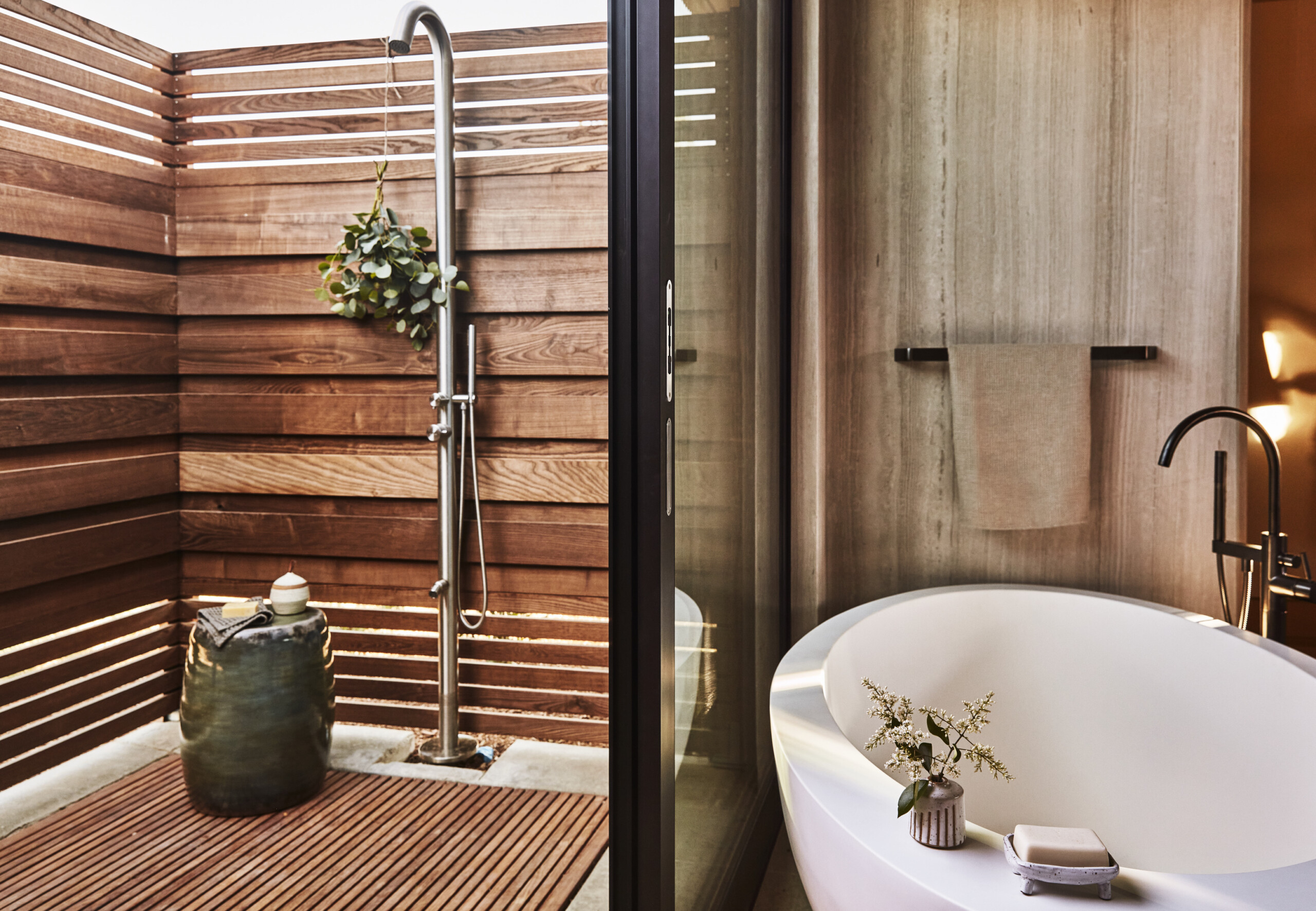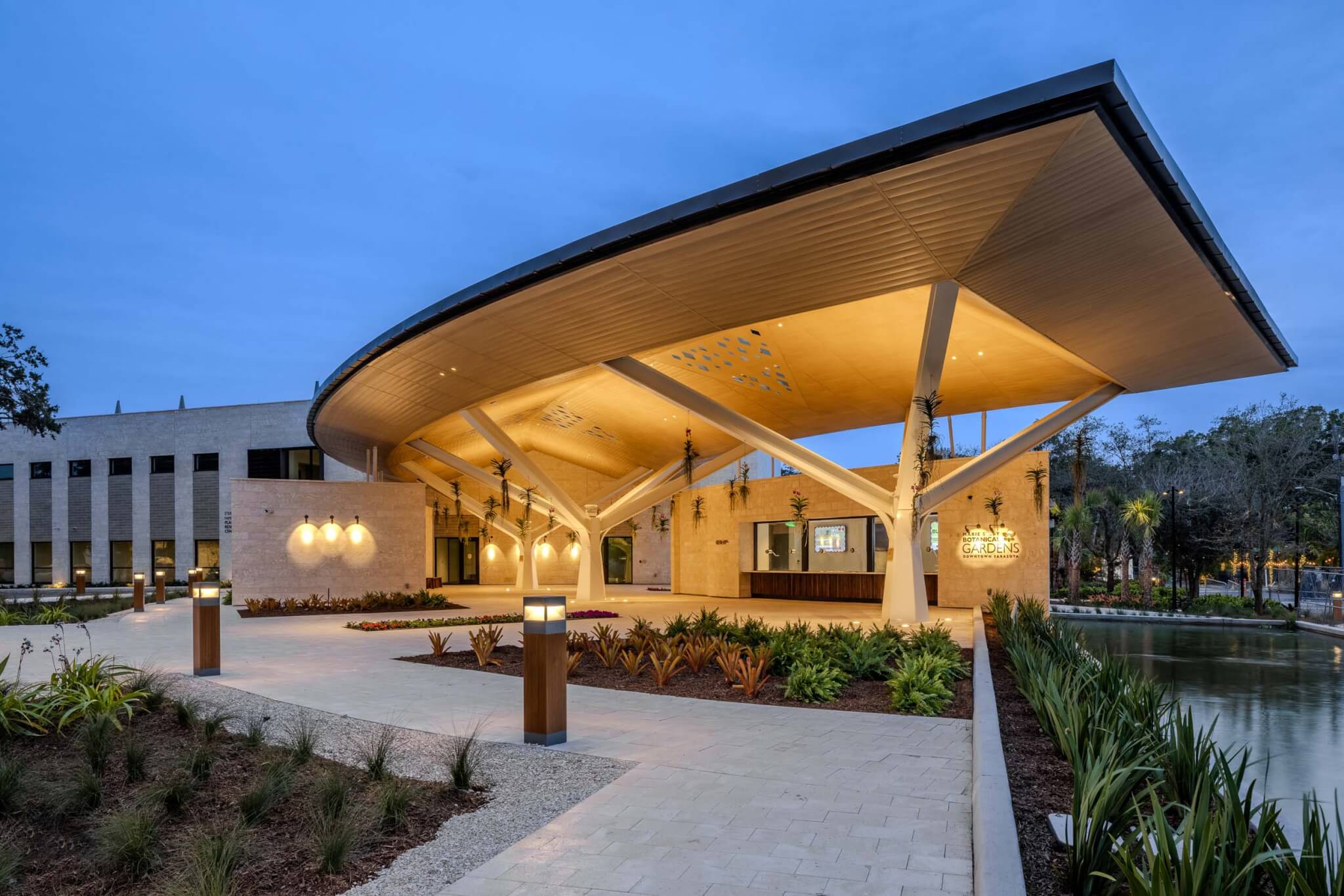
It’s only logical that a botanical garden has plants and greenery hung from nearly every wall and wedged into its every crevice. Marie Selby Botanical Gardens in Sarasota, Florida is no exception to this maxim; the 45-acre complex renowned for its collection of air plants has just come out of the first phase of a master plan to make the campus more sustainable and to enrich its 50-year history researching and educating the public on air plants.
The botanical garden was founded in 1973 when philanthropist and gardener Marie Selby handed over her residence and property, which later became the gardens. The master plan was first announced in 2017. It encompasses three phases that have been led by a team of design consultants, including OLIN as landscape and masterplan lead; Overland as architect and design lead; Kimley-Horn as site engineer and community liaison; and Sweet Sparkman as local architects.
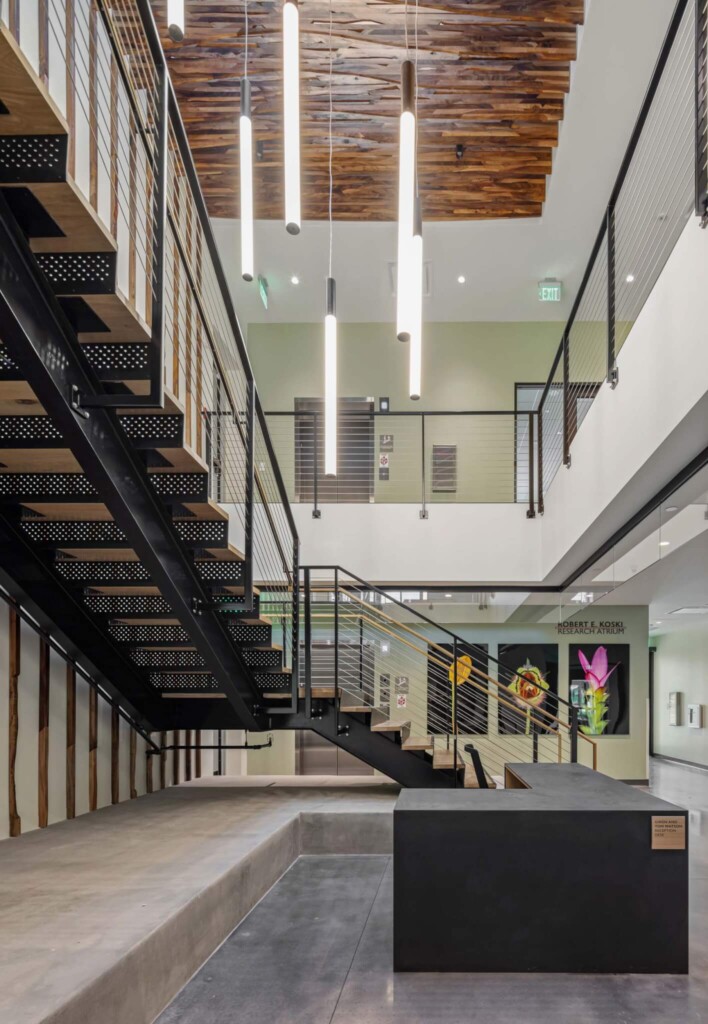
Phase one of the multiyear project focused on adding 188,030 square feet of space to the existing campus through a new visitor welcome center, research building, shop and restaurant. The forthcoming second and third phases build on the resiliency and sustainability efforts implemented throughout this first phase, with the construction of a hurricane-resilient greenhouse and sea wall construction.
The Jean Goldstein Welcome Center is one of the three buildings to be completed in phase one. The structure, anchored by a curved canopy roof, has become the new focal point of the botanical garden. Steel trusses holding up the swooping wood canopy roof recall the form of tree branches. Bromeliads, orchids and other air plants dangle from the rafters above an expanse of pavers planted with garden beds. Inside, a new ticketing counter has become the first point of entry for guests and plant enthusiasts, while the welcome gallery serves as a primer on the world of plants and gardening.
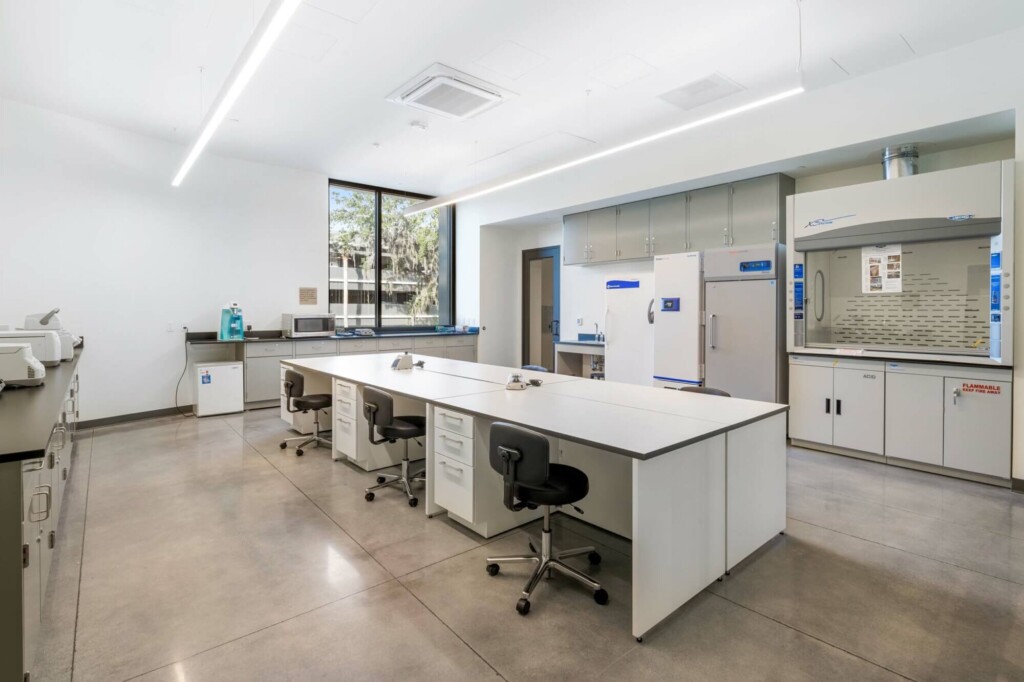
Adjacent to the welcome center is the Steinwachs Family Plant Research Center. It dons a limestone facade wall that echoes that of the welcome center, two-story-tall plant wall, and roof lined with planters and an array of solar panels. Here, a theater, research laboratories, and offices wrap around a central atrium formed by several mezzanine levels connected via custom-designed steel and wood stairways. A library houses a collection of rare books and on the top floor is a hurricane-proof herbarium and spirits collection.
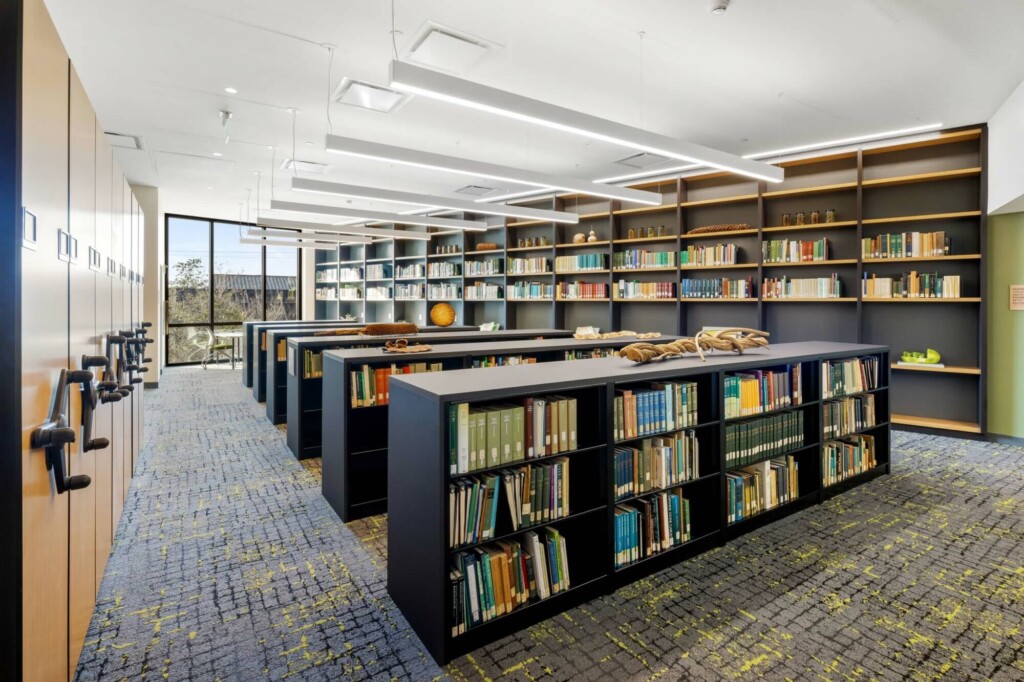
The third of the three facilities realized in phase one was the Morganroth Living Energy Access Facility, LEAF for short. It combines three programs into one building that the gardens dubbed as the “real powerhouse of the project” in a press release. Part parking garage, part restaurant, and part gift shop, like its neighbors, the building was drawn up as a model of sustainability. Solar panels, totaling 50,000 square feet, atop the building are slated to produce 1.23 million kilowatt-hours of power, more than enough to power the building and offset nearly 1,000 tons of CO2 each year, this is the equivalent of powering 148 U.S. homes. According to the botanical garden theses facts alone make it the “first net-positive energy Botanical complex in the world,”—giving the New York Botanical Gardens’s new Site Operations Center, aiming to be the first “net-positive energy” facility in the Bronx, a lot to live up to.
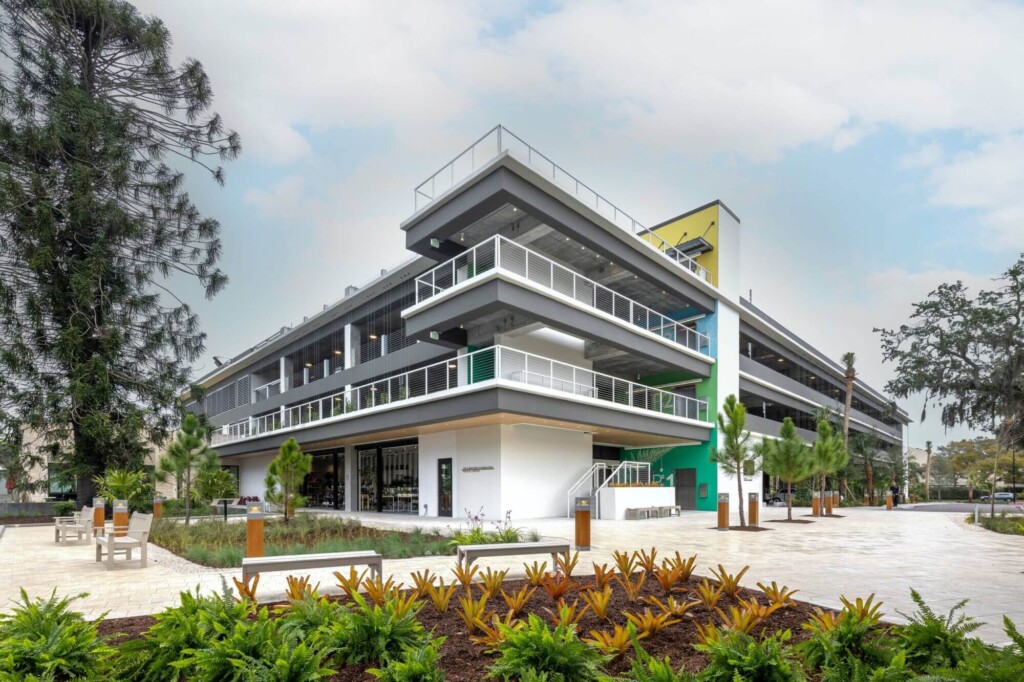
The Green Orchid, a new eatery for the botanical garden takes farm-to-table to a new level (literally) with a “roof-to-plate” food concept. Gardens atop the LEAF building grow herbs, vegetables, and fruit for use as cooking ingredients in a seasonally changing menu. The kitchens are 100 percent run on electricity and in combination with the solar panels, the Marie Selby Botanical Gardens also claim that The Green Orchid is “the world’s first net-positive energy restaurant.”
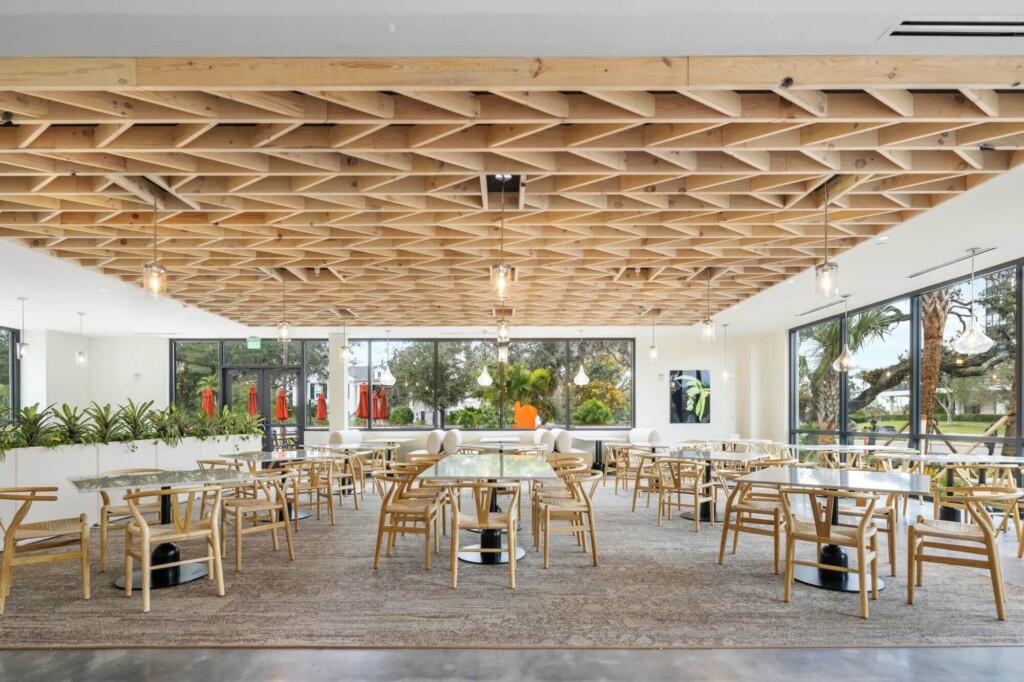
Windows enveloping the dining area capture nature, which is further drawn inside through the installation of planter boxes. The wooden planks used to form the rather sculptural cypress and pine ceiling were taken from trees around the site, uprooted and moved during the construction process. Overland worked with Selby and local artists and woodworker Ryan Tremblay across the campus to find ways to reuse the trees in the design. Other implemented examples include a mahogany boardroom table and usage within the public spaces of the Research Building.
Campus-wide water is collected from the buildings and ground and circulated through bioswales and used to cultivate the plantings or routed into the nearby Hudson Bayou.
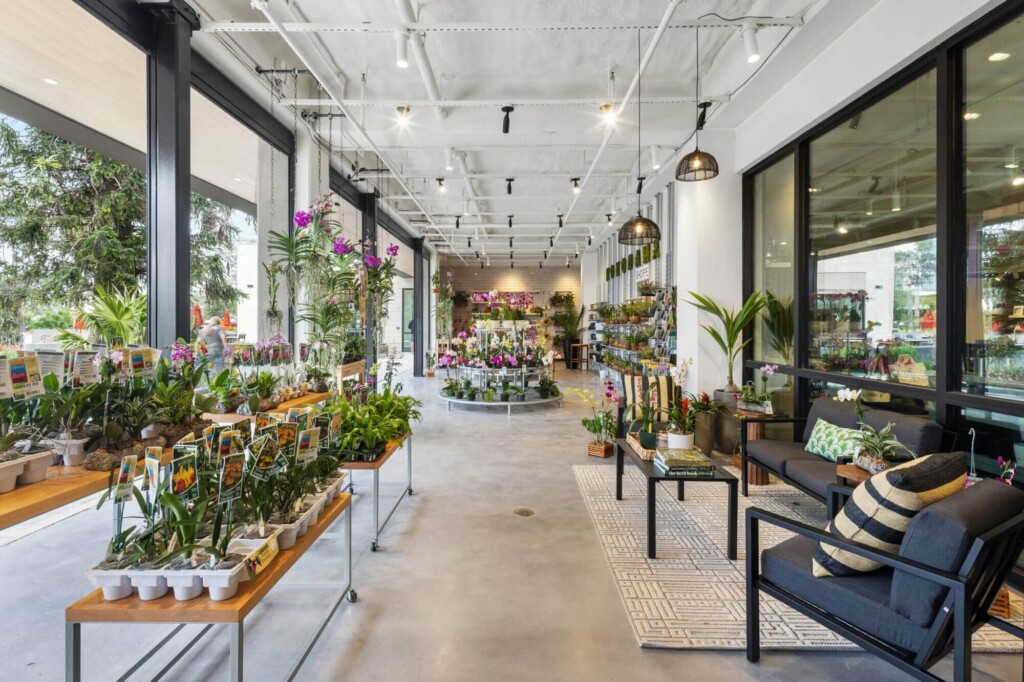
An anticipated timeline for the start and completion of the second and third phases will be announced soon. In addition to sustainability improvements, the forthcoming phases will see the restoration of the Payne Mansion, a new learning pavilion for education use, and rethinking the circulation paths throughout the campus.
Read the original article on archpaper.com
Creating places that can’t be built by anyone else
…for anyone else.
